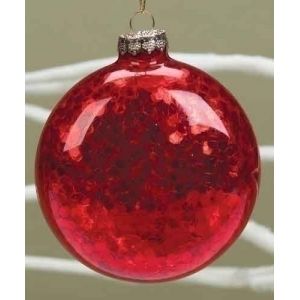Perhaps my fascination with this topic has some deep psychological roots, but I rather suspect it is part and parcel of a lifelong obsession with magic and folklore. As a young girl, I read every book about magic that I could find and performed all the rituals that had been pieced together by modern Wiccans and other 'practitioners' of magic. Most of them were NOT effective, but my soul thrills to beautiful rituals and ancient mysteries and the study therefore was kind of an end in itself.
The more I read about the ancient mystery religions, the more convinced I become that the tradition of the Evergreen at the time of the Winter Solstice may be one of the most ancient. Joseph Campbell is known for his work in comparative mythology but his fame spread because of his use of contemporary technology and his television series as much as for the books that he wrote. In fact, he simply republished the work of other comparative mythologists for the most part, although his own particular brand of faith gave his own work a vibrancy and almost missionary quality that some one like Sir James Frazer lacked. Robert Graves in 'The White Goddess' demonstrated a similar fervour, but his stemmed more from his passion for the 'muse' for whom he wrote the book than any spiritual roots. He adored words and 'The White Goddess' is a bizarre but fascinating exercise in words and an effort to relate letters and sounds from various ancient languages to a universal mystical alphabet and dictionary of his own creation. Joseph Campbell attempted to divide religion into those embraced by nomadic/hunter societies and those of agrarian/settled societies. His work was brilliant and resulted into a number of gorgeous 'coffee table' books but ultimately was too simplistic to have any true application to the religions and traditions that have survived into the contemporary world. When it comes right down to it, in ancient eras, many of the nomadic/hunter societies invaded and conquered the settled agrarian people and their own traditions and beliefs intermingled and resulted in a fusion of both.
The tradition of the Yule Tree is an excellent example of the marriage of a number of diverse beliefs and religions. Western Christianity with the symbolism of Christ hanging on the Cross is one of the most potent but this partly is due to the fact that it represents one of the most ancient cycles of sacrifice, death and rebirth.
In the myths of ancient Egypt, Osiris was murdered (or sacrificed) and his body was cut into a ritual number of pieces and fed to the waters. All pieces except for his phallus were recovered and placed in a coffin that floated up to Lebanon where it was embraced by a Tree, becoming part of the Tree.
In the old Canaanite myth cycle of Baal and Mot, the God Mot is cut into pieces and placed in a winnowing fan. He is winnowed like grain and planted in the soil ultimately in the same way that the human sacrificial victims in ancient India were cut into a specific number of pieces, consumed partly by the village and then planted in the field to bring fertility to the land.
In ancient Egypt, the grain would be reaped, cut with sickles, then placed into large nets and carried between two poles to the threshing floor. Cattle then would trample the stalks to separate the ears from the straw (or grain from the chaff). The workers then would scoop the grain, throw it into the air, allowing the husks or chaff to be blown away by winds generated by winnowing fans.
In the religion of Attis, the male member of the God was cut off and nailed to a Pine Tree where it was worshipped and adored. The Tree was cut down and carried in processions. Devoted worshippers would castrate themselves and fling their male parts into the lap of the Goddess Mother who had given birth to the God Attis. The Tree would be taken underground into a cave where it reposed for three days. On the third day, a procession would go to the cave where they would cry: 'He is risen!' and bring forth the God's image, nailed to the trunk of the Tree.
In the sacred mysteries of the Great Goddess Demeter, the essential Mystery resided in a basket and would be shown to worshippers in a secret ceremony. What lay within the liknon or basket? It had to be the male member of the God which would have been prepared in a special fashion so that it never would decay. What is a Pickle but a green cucumber that has been preserved in a special way with Salt, a symbol of Life itself? Moreover, Green is the colour of Life and thus, the cucumber is found in many cultures and civilisations as an object of special significance.
In Japan, the traditional offering to the Kappa, a spirit of the waters, is a cucumber on which a wish or wishes have been engraved. Thus, from East to West, a 'perfect offering has been made' in the form of a cucumber or other green vegetable as a substitute for the actual male member.
The mythological significance of the coloured glass balls that have been traditional Christmas Tree ornaments throughout the modern era and indeed as long as Christmas Trees have been a part of Western civilisation is obvious. They are the vessels in which the 'seed' of the God reposed. The mistletoe is another Christmas tradition that speaks eloquently of the male contribution to the act of creation.
Fundamentalists love to point to the 'pagan' roots of many holiday traditions with horror, denouncing them as evil or somehow alien to Christianity and yet, it is more than possible that Christ was a follower of Dionysus and that his mother was a priestess of the cult. Whether or not this was the case (and the entire life of Christ is shrouded in mystery), the fact of the matter is that ancient rituals are part of the collective unconscious and when a religion embraces them rather than repudiating them, that religion gains in validity. There are reasons why traditions survive from age to age and culture to culture. Some symbols are fundamental to the psyche and the power within them cannot be denied.
The birth of the God at the time of the Winter Solstice affirms the cycle of life, death and rebirth and is a symbol of Hope. The Crucifixion is the Sacrifice that is necessary ultimately to allow the God to be reborn at Christmas. Jesus himself declared: 'Whoever does not bear his own cross and come after me cannot be my disciple' and spoke more than once of the need to die in order to be reborn. It is the way of Nature that many plants must die in order to be reborn at another season. The fact though that Christ spoke of a 'cross' which is the Tree upon which the ancient religions of Attis and Adonis were centred is another compelling piece of evidence in the theory that he was himself a follower of one of those ancient mystery religions.
Last year, after Freya and her best friend Kait made a series of references in jest to a Christmas Tree that would be trimmed with phallic symbols, I found some glass pickles and added one to our Tree. This year, when I placed the glass pickle in the very centre of the Tree, close to the Trunk, I thought about the ancient mystery religions as I did so. A green glass pickle may not be the most beautiful of ornaments but it possesses a potent significance and I have every intention of making it an integral permanent part of the Yuletide celebrations.
Musings on every topic under the Sun
My Sites as Freyashawk
My Sites
Freya's Site
About Me

- Valkyrie Hawk
- My name is Eugenia-Maria Martino de Conde. Freyashawk is the name under which I write game guides and play many games. I specialise in Northern mythology but my original academic background is in History and British Law. Mine is the view of an exile, a Swan-Maiden rather than a god. Not an exile from heaven (that would be arrogant), but an exile nonetheless. I have lived in La Jolla, Nepal, London, Southampton, Manhattan, Roma, Pennsylvania et alia but spiritually belong to no land. Thus the affiliation with the air, hawk and swan. A Valkyrie chooses heroes from the slain. Walking among the dead is disconcerting. My greatest loves are my daughter and my Puttikins, my Himalayan cat clan. As Freyashawk, I write strategy guides for games. Time to write another novel for a writer can be a Valkyrie, creating warriors from her imagination that inspire people in the eternal battle between good and evil. Therein is the power I desire.




